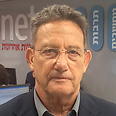After the withdrawal from Lebanon Israel treated this land as though it were not under its sovereignty, Hizbullah, in turn, set itself up there. Olmert's cabinet decided not to repeat this mistake.
It also decided not to wait with its response as the planting of the explosive devices (recently uncovered by troops) was in fact the first Hizbullah test the Israeli government and IDF faced following the second Lebanon war. The IDF decided to act quickly and decisively while at the same time refraining from fanning the flames on this volatile front. Hence, it decided to send in three bulldozers rather than tanks or armored personnel carriers.
IDF tanks and APCs are already in the area but are positioned to provide cover for the bulldozers if the need arises. The idea was to lend the bulldozer operation a local character directly related to the explosive devices, without allowing Hizbullah and the Lebanese army to present it as an Israeli invasion into Lebanese territory.
The bulldozers' military tactic was aimed at carrying out what is known in military jargon as "exposure" or a render safe procedure; that is, to level the land area between the Blue Line, the international border, and the security fence. This exposure was aimed at removing large rocks that could serve to conceal improvised explosive devices that are able to inflict severe harm and even penetrate armored vehicles.
Such devices need to be raised above ground level, so Hizbullah conceals them. They also use fiberglass housings designed to look like rocks to conceal claymore devices. These devices are detonated by an electrical wire or some other remote detonating device.
After the leveling of the ground by the bulldozers, it will still be possible to plant explosive devices but it will be much more difficult to camouflage them, and it would be difficult to plant devices aimed at penetrating armored vehicles, which are the most lethal and have already inflicted several casualties on the IDF.
Night-time operation
We can assume that the ground leveling operation was carried out at night not only because the army didn't want to delay its response to Hizbullah's provocation, but also to minimize the danger posed to the bulldozers if the Lebanese side had decided to launch sniper fire or anti-tank missiles.
It appears that the United Nations and the Lebanese army won't have much to say in this case because the operation was carried out within Israeli territory, after they were unable to prevent the planting of the devices.
The exchange of fire that developed following the IDF's dispatch of bulldozers demonstrates two things: One – the Lebanese army is seeking legitimacy not only from its government, which is its commander, but also from Hizbullah. Therefore it opted for a somewhat strange approach, signaling that even if Israel enters territory under its sovereignty according to the UN resolution, it would open fire.
Secondly, if the State of Israel and the IDF demonstrates resilience and consistency, such incidents will not deteriorate and lead to escalation.
Despite this, in the future Israel would do well to ensure that such ambiguous situations end. Even the enclaves located beyond the security fence have to be fenced and marked in a way that would leave no room for doubt. This way, the Lebanese army would also be spared its demonstrations of loyalty to Hizbullah.
















